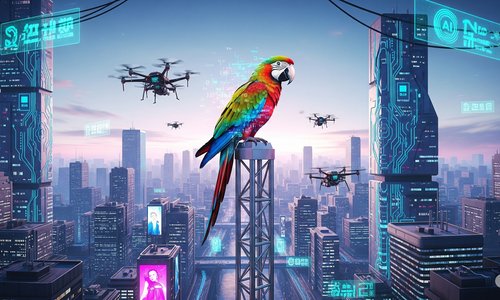
A Promessa e o Perigo da Nova Revolução Digital
A nova corrida tecnológica global levanta uma pergunta urgente: estamos prontos para confiar na inteligência que criamos?

A Inteligência Artificial (IA) e a IA Generativa (GenAI) emergiram como tecnologias transformadoras no cenário empresarial, prometendo revolucionar processos, criar novos modelos de negócios e impulsionar a inovação. Contudo, em meio ao entusiasmo, muitas organizações enfrentam um obstáculo fundamental: a dificuldade de traduzir o potencial dessas tecnologias em resultados práticos e tangíveis. Esse "descompasso do valor" não se limita aos fornecedores de solução, mas afeta gestores, equipes de inovação e líderes de projetos responsáveis pela integração da IA em suas estratégias organizacionais.
O problema surge quando custos, preços e valor não estão adequadamente alinhados. Essa desconexão resulta em projetos subaproveitados, percepções de fracasso e falta de retorno sobre o investimento. Para superá-la, é essencial adotar uma visão integrada e sistêmica, que conecte inovação tecnológica, modelos de negócio e metas estratégicas.
Custos e eficiência tecnológica
Reduzir custos sempre foi uma meta crucial em projetos tecnológicos, mas no contexto da IA, eficiência tecnológica vai além da redução de despesas: trata-se de como gerenciar recursos computacionais e maximizar os resultados por meio de escolhas estratégicas.
Um exemplo é a orquestração de modelos fundacionais, os Foundation Models de GenAI. Esses modelos, os grandes modelos de linguagens, exigem um uso inteligente da infraestrutura, e otimizações, que podem ser alcançadas ao implementar estratégias como a combinação de modelos diferentes para tarefas específicas e a análise comparativa de preço versus performance. Tais abordagens ajudam a evitar desperdícios e a garantir que a tecnologia entregue resultados significativos sem comprometer os orçamentos.
Ainda no campo da eficiência, arquiteturas inovadoras desempenham um papel crucial. A adoção de práticas como o “LLMOps”, que organiza a operação de modelos de GenAI em blocos funcionais, permite uma utilização mais racional dos recursos.
Essa abordagem facilita a implementação modular, promovendo escalabilidade e flexibilidade para atender demandas variáveis. Por exemplo, ao dividir a operação em componentes mais consistentes, como acesso a dados corporativos ou bancos de dados vetoriais, e formatação de respostas e uso de “templates”, é possível alocar recursos de forma mais inteligente, otimizando tanto o desempenho quanto os custos.
Preços e modelos de negócio
A precificação é outro elemento essencial para superar o descompasso do valor. Estratégias de preços que consideram a percepção de valor e modelos de negócio inovadores são fundamentais.
Um exemplo interessante é o modelo B2B2C (business-to-business-to-consumer), que pode ser adotado tanto por fintechs e provedores de soluções. Nesse modelo, os fornecedores não se limitam a vender diretamente para empresas; em vez disso, suas soluções são integradas às ofertas das empresas-clientes, criando um canal direto com o consumidor final. Isso reduz barreiras de entrada, aumenta a acessibilidade e amplia o alcance das soluções, ao mesmo tempo em que reforça o valor percebido pelos clientes.
Ao adotar essa estratégia, é possível alinhar preços a resultados entregues, fortalecendo o vínculo entre custo e benefício. Além disso, modelos de consumo baseados em uso ou desempenho criam mais flexibilidade e reforçam a sensação de que o cliente está pagando de maneira proporcional ao valor recebido.
Valor, design e trabalho colaborativo
O conceito de valor vai além do impacto financeiro. Ele está diretamente ligado à capacidade das soluções tecnológicas de transformar realidades organizacionais e resolver problemas de forma eficaz. Para alcançar esse objetivo, é essencial investir em atividades de design e inovação, promovendo a concepção de soluções que conectem as capacidades tecnológicas às necessidades de negócio. Essa etapa deve ser centrada em entender profundamente os desafios enfrentados pelas organizações e traduzi-los em soluções práticas.
Ao mesmo tempo, o sucesso dessas iniciativas depende do trabalho colaborativo em equipes multidisciplinares. A combinação de habilidades técnicas e de negócio é indispensável para integrar a tecnologia às estratégias organizacionais. Profissionais com expertise em IA precisam trabalhar lado a lado com especialistas em setores específicos para garantir que as soluções atendam às nuances de cada mercado, enquanto metodologias ágeis e feedback constante permitem ajustes e melhorias contínuas.
O caminho para superar o descompasso do valor
Superar o descompasso do valor exige uma abordagem abrangente e integrada, que conecte os aspectos técnicos e estratégicos de projetos de IA. Custos devem ser gerenciados com inteligência, utilizando práticas como a orquestração de modelos e arquiteturas otimizadas. Estratégias de precificação e modelos de negócio precisam refletir a realidade do mercado, como exemplificado pela eficácia do modelo B2B2C.
Mais importante, a criação de valor está na interseção entre design inovador e colaboração multidisciplinar. Apenas soluções que sejam concebidas com base em necessidades reais, e implementadas por equipes com perspectivas complementares, têm o potencial de entregar resultados que transformem as organizações.
Ao tratar a IA como uma ferramenta estratégica, e não apenas como um recurso técnico, gestores e líderes de inovação podem desbloquear seu verdadeiro potencial. A conexão entre tecnologia e estratégia é o que define o sucesso – e essa conexão é construída por meio de escolhas conscientes, planejamento sistêmico e execução colaborativa.
A revolução tecnológica da IA não é apenas uma promessa; ela já está acontecendo. Cabe a cada organização moldar o seu papel nesse futuro, transformando o descompasso do valor em uma alavanca para inovação, competitividade e impacto sustentável.
Conselheiro fundador da I2AI – Associação Internacional de Inteligência Artificial. Também é sócio-fundador da Engrama, sócio da Startup Egronn, e na consultoria Advance e investidor na startup Agrointeli . Tem mais de 20 anos de experiência em multinacionais como Siemens, Eaton e Voith, com vivência em países e culturas tão diversas como Estados Unidos, Alemanha e China.
Palestrante internacional, professor, pesquisador, autor, empreendedor serial, e amante de tecnologia. É apaixonado pelo os temas de Estratégia, Inteligência Competitiva e Inovação.
É Doutor em Gestão da Inovação e Mestre em Redes Bayesianas (abordagem de IA) pela FEA-USP. É pós-graduado em Administração pela FGV e graduado em Engenharia Mecânica pela Unicamp.

A nova corrida tecnológica global levanta uma pergunta urgente: estamos prontos para confiar na inteligência que criamos?

Por que dominar a IA será a nova alfabetização do século XXI

Conselhos de Administração devem evoluir da supervisão reativa para a antecipação estratégica, frente à crescente complexidade e volatilidade dos ambientes de negócios.

De 14 a 25 de julho, reserve suas manhãs das 08h00 às 09h30 para participar da tradicional Maratona I2AI! Uma jornada intensa com debates e palestras sobre temas essenciais: Ética,